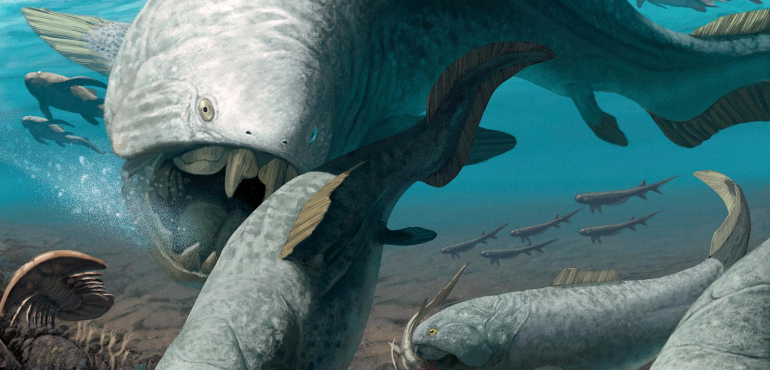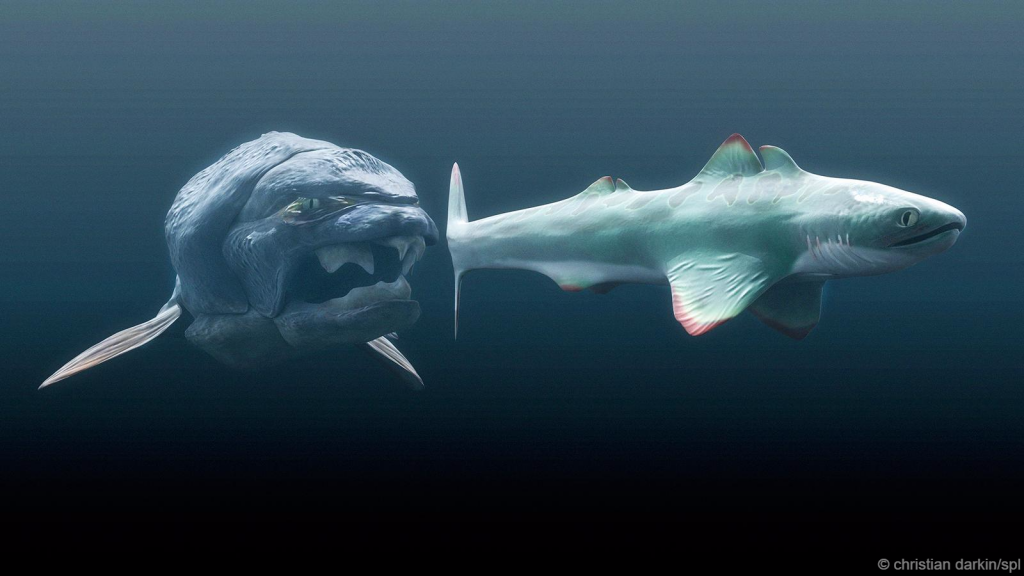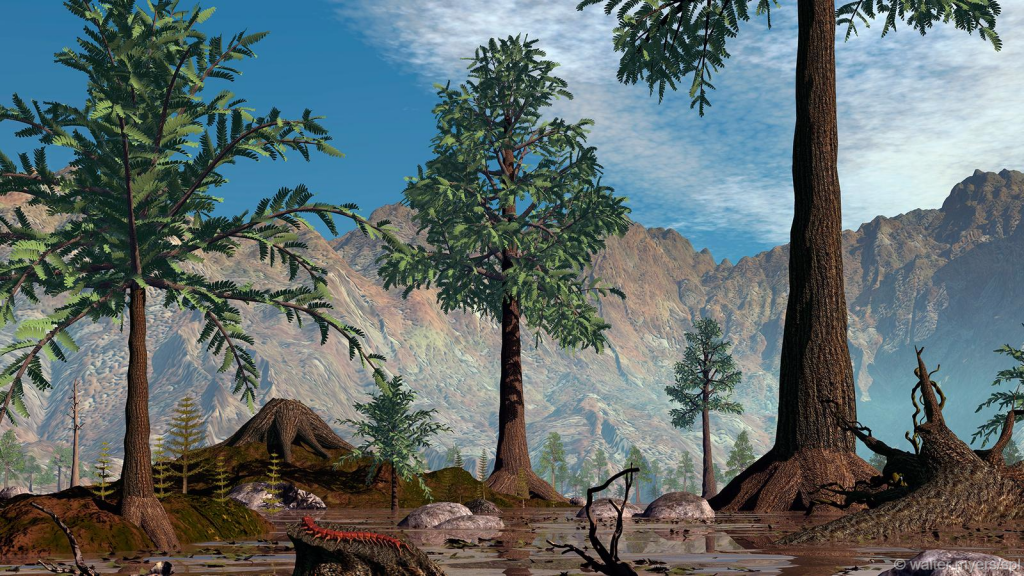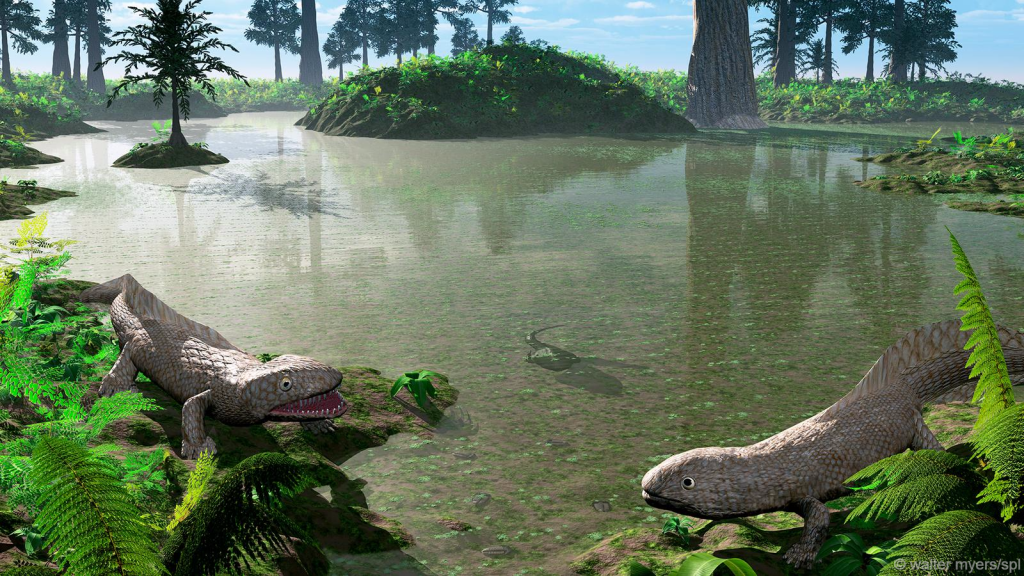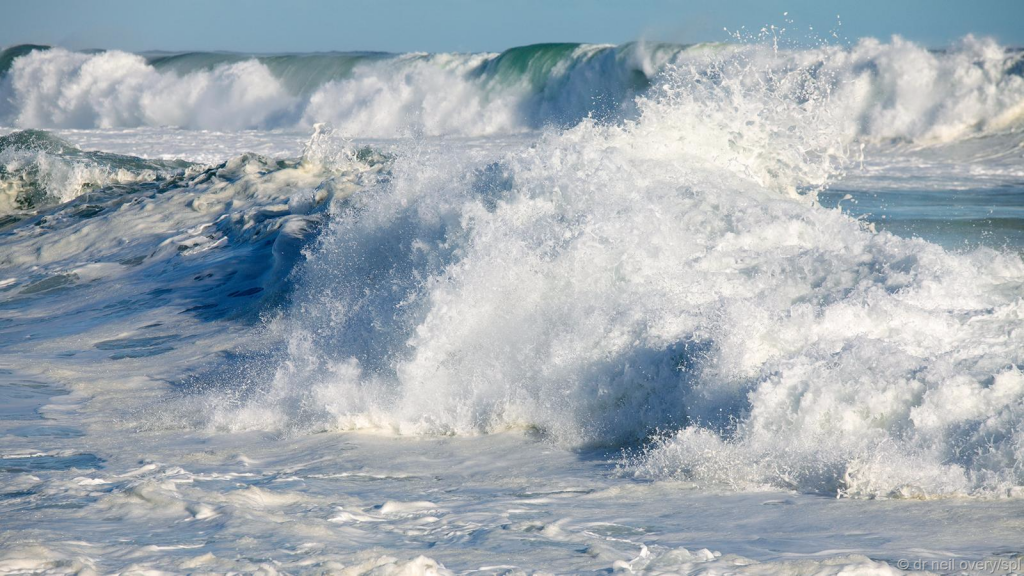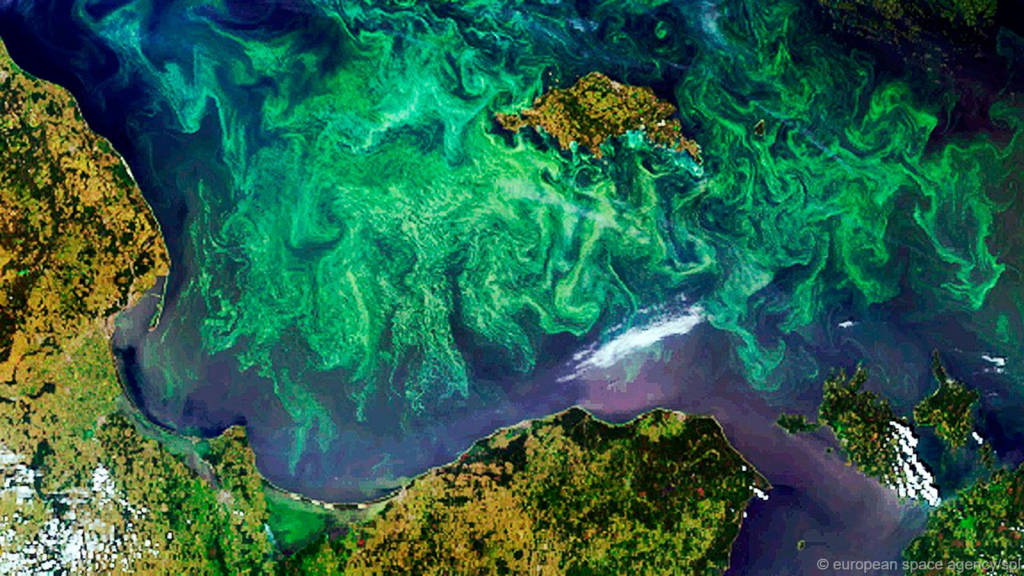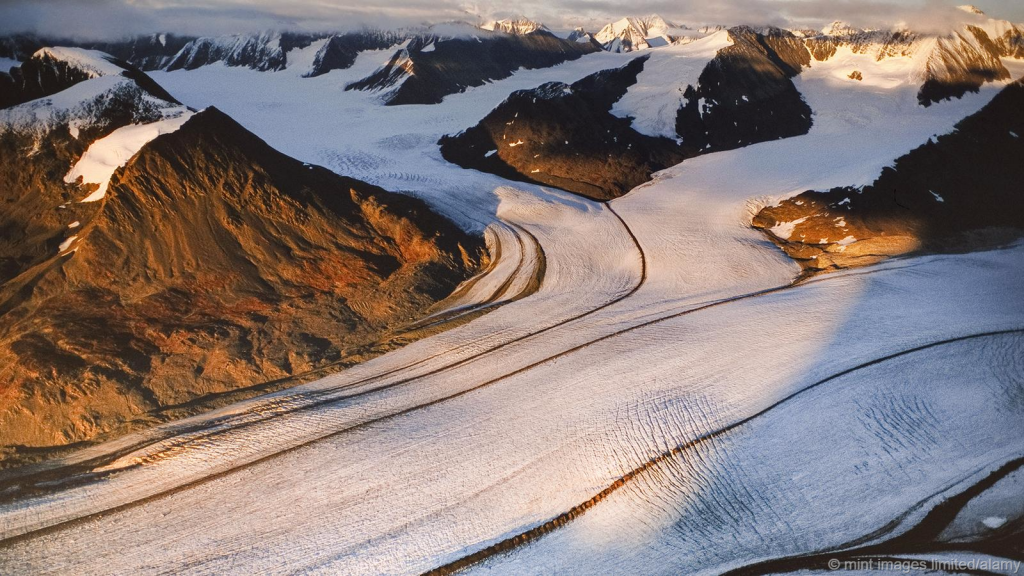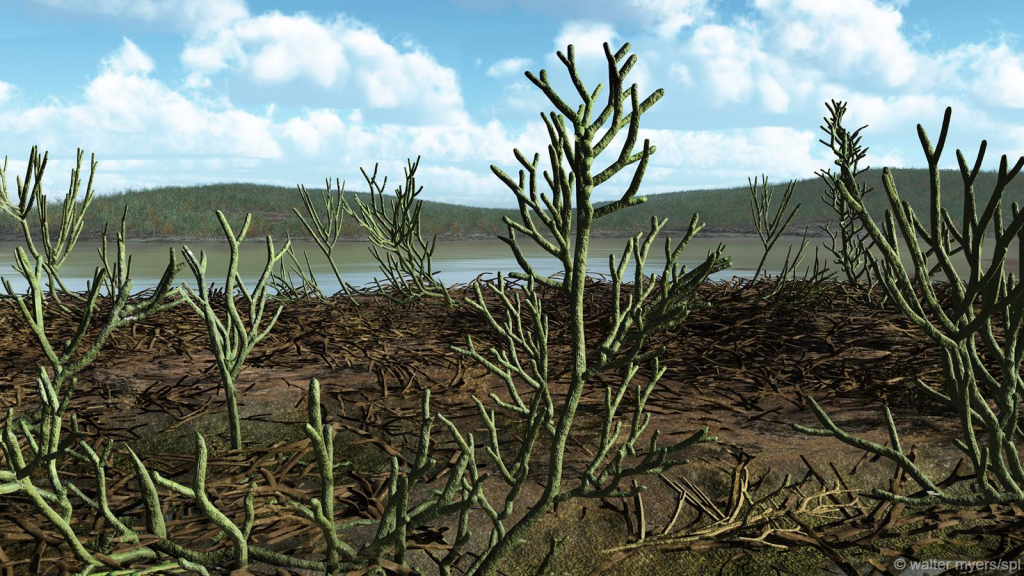It was the age of fish. 360 million years ago, there were no large land animals, and the biggest animals were still in the oceans. One of the largest was Dunkleosteus.
This was a sea monster like no other. Dunkleosteus was a powerful fish that grew up to 10m long and was covered with thick armour. It was a predator, and had sharp bones sticking out of its jaw instead of teeth. It literally ate sharks for breakfast.
You might think that this tank-like fish could withstand anything, but time was running out for Dunkleosteus. Throughout the oceans species began dying out, and by the time it was all overbetween 79% and 87% of all species had gone extinct – including Dunkleosteus.
It was one of the worst mass extinctions in Earth's history. Clearly, something dreadful must have happened, but what? There is no smoking gun, no sign of anything dramatic. Instead it seems the trigger was something utterly innocuous – but which led to a series of knock-on effects that ultimately proved catastrophic.
Dunkleosteus hunting a Cladoselache shark (Credit: Christian Darkin/SPL)
The "age of fish" is technically called the Devonian period. It lasted from 419 to 359 million years ago. This was a time long before even the dinosaurs walked the Earth.
But while there were few land animals, the oceans were staggeringly rich in life. A fossilised reef in Western Australia, the Gogo Formation, captures life in the Devonian seas.
"It's teeming with placoderm fish and they're exquisitely preserved, in three dimensions," says Michael Coates, an evolutionary biologist at the University of Chicago in Illinois. "They're beautiful and weird and there is nothing like that around today."
All this is now gone, wiped out in the extinction that struck at the end of the Devonian.
Fish became common and diverse in the Devonian (Credit: Christian Darkin/SPL)
The corals that built the Devonian reefs, the famous bottom-feeding creatures known as trilobites and ammonites, and the armoured placoderm fish such as Dunkleosteus: all of them took a clobbering. But it's not clear why.
When the dinosaurs went extinct 65 million years ago, there was an obvious culprit. A massive asteroid impact is thought to have strewn debris across the planet, blocking out the Sun and playing havoc with the climate. We have even found the crater from the impact, at Chicxulub in Mexico.
There is no impact crater dating from the Late Devonian, so we can't blame a rock from outer space. The culprit must have been something on Earth.
Thomas Algeo of the University of Cincinnati has put forward a remarkable idea. Maybe the Devonian sea life was killed off by marauding plants.
One change to an ecosystem can have big consequences (Credit: Walter Myers/SPL)
The Devonian period saw the rise of "vascular" land plants, a group that includes everything from trees to ferns and flowering plants. More primitive "non-vascular" plants, such as moss and lichen, had already evolved before the Devonian began.
The vascular plants had a powerful impact on the land. Their roots penetrated the ground deeply, breaking up rocks and helping to create soil.
By breaking down rocks, the plants released nutrients and minerals. These would have benefited the plants, but they also got washed into rivers and then out into the oceans.
That is when things began to go wrong for life in the seas.
Devonian land plants caused ecological havoc (Credit: Walter Myers/SPL)
These nutrients were food for microscopic algae in the oceans, says Algeo, and those algae began to multiply. The resulting blooms of algae would have stained vast areas of the sea green.
The algae were then broken down by bacteria, which used up oxygen in the process. "This can entirely deplete the water column of oxygen," says Algeo.
The end result was an "anoxic zone", a region of the ocean where there wasn't enough oxygen dissolved in the water for animals to breathe.
This happens in parts of the ocean today, for example when nutrients from farms run into the sea. The resulting "dead zones" can span many square kilometres.
In the Devonian, the dead zones would have spread over many thousands of years, gradually forcing animals into confined areas. If Algeo is right, the animals in the oceans then began to struggle, and ultimately died out: all thanks to the success of land plants.
The upper layers of the ocean may still have had oxygen (Credit: Dr Neil Overy/SPL)
Coates thinks Algeo is on to something, but he says it cannot be the whole story because it does not explain which species lived and which died. For instance, sharks did not die out, despite needing oxygen just as much as other fish.
That could be partly because not all of the ocean became anoxic. For instance, there would still have been oxygen in the upper layers, as the wind would mix it in from the air.
Levels of anoxia may also have varied from place to place, says Kelly Hillburn of the University of Washington in Seattle. That's because some continents released more nutrients than others.
"There weren't any mountain-building events in Western Australia," says Hillburn. "You're still putting in some continental run-off, but nowhere near the amount you're putting in say in Europe or North America."
Still, it seems that lack of oxygen isn't enough to explain the extinction. And it does look like life had other problems to contend with besides asphyxiation.
Fuelled by nutrients from land, marine algae bloom (Credit: European Space Agency/SPL)
For one thing it seems the oceans may have been toxic as well. In 2012 Kliti Grice of Curtin University in Perth, Australia and her colleagues studied the fossil of a crab-like creature and found evidence of toxic sulphur chemicals.
This was the result of other microorganisms feeding on the algal blooms. These species didn't use oxygen, so they didn't contribute to the anoxia. Instead they produced hydrogen sulphide as waste.
That's the chemical that gives rotting eggs their distinctive smell. It's highly toxic, so exposure to hydrogen sulphide would have killed many organisms, and could even have affected animals on land.
That's not all. Those pesky land plants also contributed to an ice age.
As the climate cooled, glaciers formed (Credit: Mint Images Limited/Alamy)
The more the land plants grew, the more carbon dioxide they removed from the air. Famously, CO2 is a greenhouse gas that traps the Sun's heat, so taking it out of the air would have cooled the planet.
As the chill deepened, glaciers would have formed. By trapping water on land, the glaciers would have lowered sea levels, causing even more disruption to life in the ocean.
With all of these changes occurring at once, life on Earth must have quickly become intolerable for many species, says Algeo.
These events did not happen all at once – but then neither did the extinctions. In fact they seem to have been spaced out over 25 million years or so.
Little things like land plants can have big effects (Credit: Walter Myers/SPL)
Some species would have succumbed quickly. Other creatures that depended on those species for food would also have experienced a knock-on effect, dragging them down to extinction. It was a long, slow chain reaction.
During such chaotic times, any harmful events would be more disruptive than they would be in "normal" periods, says Algeo. "There might have been volcanic eruptions," he says. "Under stress conditions even relatively small external disturbances of this kind could potentially trigger elevated extinction rates."
This may all seem a little far-fetched. Is it really possible that one group of organisms, the land plants, could have caused so many problems for so many animals?
The funny thing is, life causes a lot of its own problems, according to Peter Ward at the University of Washington in Seattle. "Life appears to be its own worst enemy," he says.
The Late Devonian extinction fits well with Ward's "Medea Hypothesis", which says that life is ultimately self-destructive.
The land plants are a classic example, says Ward. "To begin with these trees are winning the whole battle, it's great for them," he says. "But then there is the unforeseen consequence." The plants' deep roots set off a series of chain reactions. "All of a sudden they've screwed the entire biosphere."
Ward says similar things happened during other key crises in Earth's history. For instance, 715 million years ago the world froze over, becoming a planet-sized snowball, and life may have contributed by removing carbon dioxide from the air.
Two other mass extinctions seem to have involved nutrients running into the sea and causing havoc, says Grice: the "Great Dying" 250 million years ago and the End-Triassic mass extinction 201 million years ago. "It's not just the Devonian," she says.
Ward's idea is a scary one. But life's self-destructive nature does have an upside. If you're willing to take the long view, the Devonian extinction was a good thing.
Immediately after the end of the Devonian, a host of new species appeared, says Coates. "By, say, 340 million years ago, suddenly you've got angelfish – these body forms which we've never had before," he says.
The first large animals also appeared.
They evolved from fish, some of which had been gradually changing their fins into limbs to allow them to venture onto land. But it was only in the aftermath of the extinction that some of them committed to the landlubber lifestyle.
They eventually gave rise to all modern amphibians, reptiles, birds and mammals – including humans.
Such big evolutionary leaps, such as major changes in body form, don't tend to happen when the earth's climate is stable and hospitable. Rather, these important steps in evolutionary history are characteristically tied to big upheavals like mass extinctions.
"From the seeds of destruction come these brand-new evolutionary innovations," says Ward.
Algeo has a different perspective on the Devonian extinction. He says it is a warning from history, an illustration of just how badly things can go wrong if you mess up the biosphere too much.
Over the last few thousand years, and particularly over the last 200, humans have massively expanded their dominance on the planet – just like the first land plants did 375 million years ago.
At the same time, our activities have been blamed for a rise in extinction rates. One recent study estimates that, over the last century, species have been going extinct 100 times faster than the natural rate.
If this goes on, we could cause the sixth great mass extinction in Earth's history. It will be the first one since the loss of the dinosaurs 65 million years ago.
Of all the mass extinctions known to science, "the Late Devonian event is closest to what's going on in the modern world," says Algeo. "I think there's an important message to us about what might happen to the biosphere."
Because we are so successful, humans are putting a lot of pressure on other species, and that means the slightest nudge could tip them over the edge. The Devonian extinction suggests it has happened before, and could happen again.
Source: BBC, Full Article

